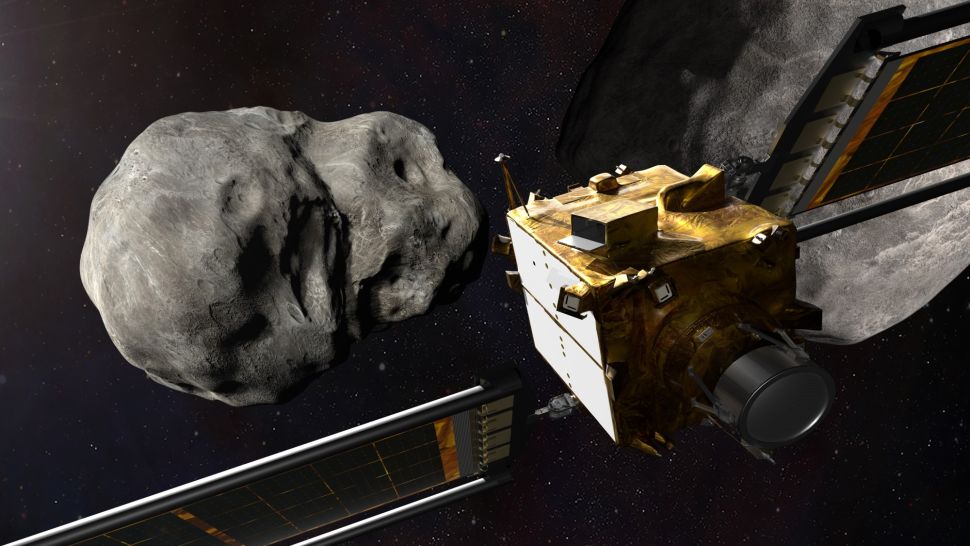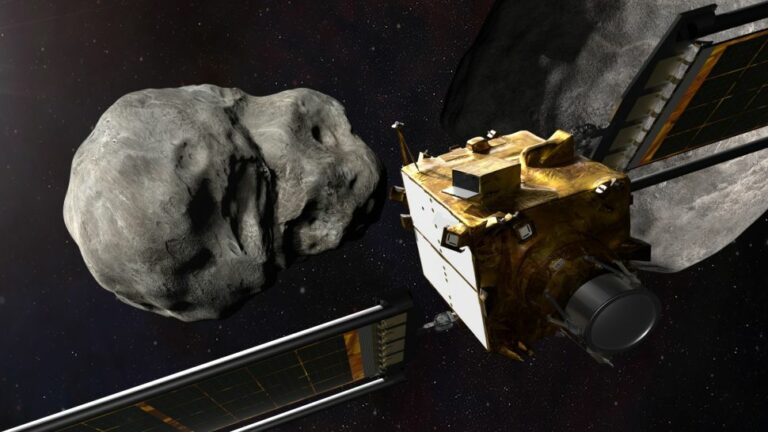This month, a NASA spacecraft will conduct a historic test of planetary defense.
On Sept. 26, DART will slam headfirst into a small asteroid. You know, for science.
NASA will usher in a new era for the solar system in two weeks.
The Double Asteroid Redirection Test (DART) mission, which only recently launched, is responsible for the achievement. On September 26, DART will crash with a tiny asteroid in a rare instance where the destruction of a spacecraft is intended. Scientists believe that if a harmful asteroid were to ever threaten the globe in the future, a mission like DART would be able to prevent the catastrophe. The project is in the name of planetary defense, which aims to defend Earth from any potential asteroid impacts.
At a Monday press conference, Thomas Zurbuchen, NASA’s associate administrator for science, said, “These things are hurtling through space and have obviously damaged the moon and, over time, even on Earth have had huge repercussions, have changed our history” (Sept. 12).

“A number of new missions that we established are really assisting us in an unprecedented manner in understanding and quantifying those dangers,” Zurbuchen continued. In a direct experiment, “DART is a first mission to try to genuinely bump out of the way an item of threat.”
Nearly 30,000 asteroids whirl through the solar system near Earth, and scientists have detected and plotted their orbits. All of those asteroids either never come in contact with Earth or are so tiny that they would harmlessly burn up in the atmosphere if they did. However, planetary defense specialists want to be ready in case Earth is harmed by an asteroid impact in the future.
According to the hypothesis, if astronomers ever discovered an asteroid headed straight for Earth, an impactor probe might reposition the space rock’s orbit such that it passed by Earth at a safe distance. But if the need comes, scientists don’t want to rely just on theory.
That’s where the spectacular demise of DART comes into play. Dimorphos, a minor asteroid that collides with the spacecraft, circles Didymos, a bigger near-Earth asteroid, every 11 hours and 55 minutes. (Neither asteroid threatens Earth, and DART won’t make that different.) Dimorphos’ orbit should be modified by the DART collision, perhaps shortening its circle by 10 minutes.
Following the collision, researchers on Earth will spend weeks studying the actual alteration in the moonlet’s orbit to compare with their projections. The research will improve scientists’ knowledge of how asteroids react to impactors and assist in adjusting any upcoming missions to the required level of orbital alteration.
Nancy Chabot, the DART coordination director at the Johns Hopkins University Applied Physics Laboratory in Maryland, which oversees the project, stated during the press conference that “this isn’t simply a one-off occurrence.” We are interested in Dimorphos’ fate, but much more so, we are interested in what it may indicate for future applications of this approach.
The complexity is the same even if the stakes are lower than any situation that would drive a genuine asteroid-deflecting expedition.
The deputy mission system engineer, Evan Smith, remarked during the press briefing that the mission is “very demanding” because the spacecraft would only be able to sight Dimorphos itself an hour and a half before impact. This is a par-one course, so this time we’re going for the kill.
What happens if things doesn’t go as expected? The mission team is rather certain that there should be something to see as long as the spacecraft meets its goal.
It would be quite unexpected, according to Chabot, if DART collides with Dimorphos and there is no subsequent change in orbital period. The weight of the spacecraft colliding with Dimorphos alone is enough to give DART enough velocity to alter its orbit by a meaningful amount.
Missing the moonlet is still a possibility, but that’s basically of the objective of DART: to figure out what prospective planetary defenders need to know if they ever want to launch an actual asteroid-deflecting mission.
During the press conference, Andrea Riley, a program executive from NASA’s Planetary Defense Coordination Office, remarked, “This will give us all confidence that deflection technology might function in the future.” “Even if it fails, it still offers a ton of information. This mission is a test. We test because we prefer to do it now than to wait until there is a real need.”
Do not forget to share your opinion with us to provide you with the best posts !





0 Comments